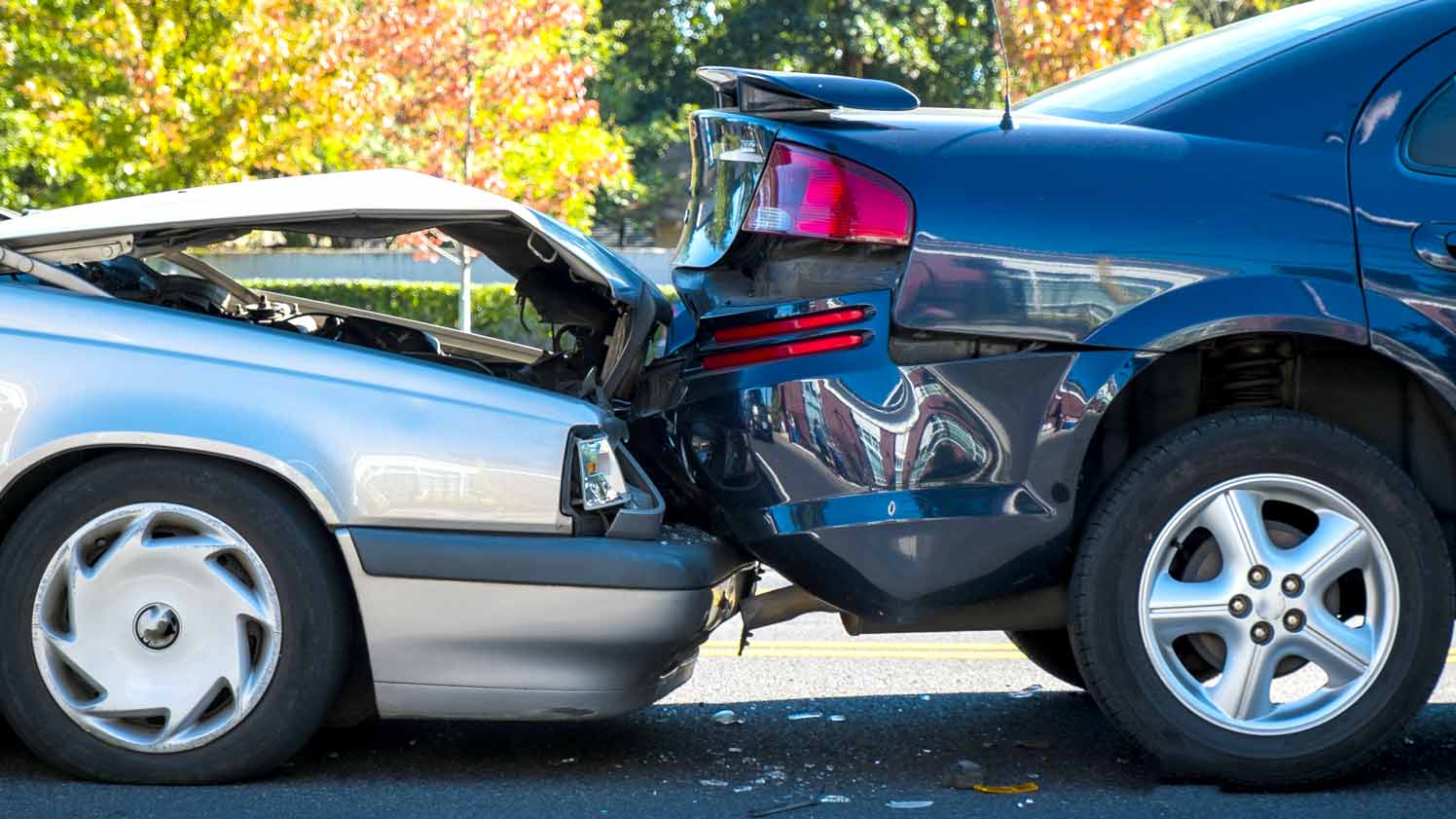Module IV – How to reduce liability risk?
On the road to fleet safety, reducing liability costs is a strategic move that protects your budget and strengthens your reputation.
Welcome to Module VI, where we will explore the critical aspects of reducing liability risk within your fleet operations. This module is designed to equip you with the knowledge and strategies to safeguard your organization from potential financial burdens and reputational damage stemming from fleet-related incidents. We will delve into understanding what constitutes liability risk, its impact on your budget, and how technology, specifically telematics, can be a powerful tool in mitigating these risks. By the end of this module, you'll have a clear understanding of how to proactively manage and reduce liability exposure, promoting a safer environment for your drivers and the public while protecting your organization's resources.
What is liability risk?
Fleet liability risk refers to the potential financial responsibility that a company or organization may face due to collisions, injuries or property damage involving their fleet vehicles or from false claims made against one of your drivers. This can include:
- Vehicle collisions: Costs associated with collisions, including property damage, injuries and fatalities
- Driver negligence: Liability arising from the actions of fleet drivers, such as reckless driving, speeding or distracted driving
- Vehicle maintenance: Responsibility for collisions caused by poorly maintained vehicles
- Environmental damage: Responsibility for environmental contamination caused by fleet vehicles
- False claims: Litigation costs to defend against fraudulent claims filed against one of your drivers for incidents or damages that didn't actually occur, were staged or are exaggerated
These risks can result in significant costs, including legal fees, settlements, medical expenses and damage to the company's reputation.


What is the impact of collisions on liability risk?
Collisions are costly. For public sector fleets, the financial burden of collisions extends far beyond vehicle repairs. Liability claims, legal fees, lawsuits, medical expenses and increased insurance premiums can significantly strain budgets and divert resources from essential services. For these reasons, a proactive approach to fleet safety is vital. It will not only protect drivers and the public, but also safeguards taxpayer dollars and strengthens your agency's financial stability.
For more information on establishing a safety program, Module VI – Step by step: Creating your fleet safety program
Did you know?
The average cost borne by an employer if their driver is involved in a crash is:
average collision cost
in the event of an injury
in the event of a fatality
Video
The City of Raleigh improves safety
When the City of Raleigh, North Carolina, developed a proactive safety program to increase the city’s safety scores, they not only doubled their fleet safety scores in less than three months, they also saw a dramatic reduction in liability costs. According to Evan Sloan, Chief Safety Officer, Enterprise EHS & Workers’ Compensation Lead with Raleigh, “We reduced our repair costs for vehicles. We reduced our at-fault motor vehicle collisions. We reduced our workers’ compensation incurred costs.”

The role of technology in mitigating liability risk
The foundation of reducing liability costs lies in having the technology in place to proactively mitigate your exposure to liability costs and the data to provide a “neutral eyewitness” in the case of collisions. Telematics is a key technology in this approach. Modern telematics solutions go beyond simple GPS tracking to include a range of safety features. These features help identify and address risky driving behaviors, ultimately reducing the likelihood of collisions and associated liability costs.
Case study
The State of Utah reduces collision costs by 21%
The State of Utah implemented telematics into its safety program to track aggressive driving, speeding and seat belt usage to inform driver education, and monitor vehicles for issues to provide proper maintenance. The program ended up improving safety and saving the state money, with first-party collision costs declining by 21% over a one-year period.
“It’s amazing to be able to have your hands in the data and to make decisions that benefit the fleet and your driver’s lives.” Jeff Mottishaw, Director of Fleet Operations.

Mitigating collision risk with telematics
Recognizing the significant impact of collisions on liability costs, prioritizing collision prevention is paramount. Telematics offers several key features that can help mitigate collision risk, as attested by Keith Kerman, Chief Fleet Officer, New York City Department of Citywide Administrative Services: “We are currently tracking 22,000 vehicles real-time using telematics to monitor their speed, location, acceleration, braking, and by doing that prevent crashes from taking place.”
- Driver performance monitoring and collision risk assessment: Implementing a comprehensive safety program that includes driver scorecards and collision risk models can effectively identify high-risk drivers. This data-driven approach allows for targeted interventions and training programs to improve driver behavior and reduce the likelihood of collisions. (Refer to Module VI for more on identifying high-risk drivers.)
- Targeted driver coaching: Utilizing driver coaching tools can help address and correct specific driving habits that increase collision risk. By providing personalized feedback and guidance, these tools empower drivers to adopt safer driving practices. (See Module VI for more information on driver coaching.
- Advanced safety technologies: Integrating cameras and Advanced Driver-Assistance Systems (ADAS) into your safety program can significantly enhance collision avoidance efforts. These technologies offer features like fatigue detection, lane departure warnings and forward collision alerts, providing an additional layer of safety and support for drivers. (Refer to Module V for an overview of camera and ADAS technologies.)
The results of implementing telematics
Average reduction in collision rate for fleets regularly using Geotab’s safety features
Reduction in fatal traffic events over 5 years by New York City
Reduction in collisions, reported by Red Hawk Fire & Security
Mitigating false claims
Research from Marathon Strategies indicates a continuing upward trend in high-value jury awards. In 2023, cases resulting in awards exceeding $10 million — often referred to as "nuclear verdicts" — increased by over 27%. This trend highlights the growing financial risk of litigation.
Telematics data is becoming increasingly valuable in litigation, offering more than just a retrospective view of events. It's now a powerful tool for building strong legal cases and achieving favorable outcomes. By capturing comprehensive vehicle data, telematics systems offer a precise and objective account of incidents, surpassing the limitations of human recollection. This technology eliminates the potential for human error or bias, delivering irrefutable evidence for a clear understanding of what transpired.
Advanced telematics features, such as collision reconstruction tools or camera integrations, further amplify its value in litigation. These tools use machine learning to further analyze telematics data to create detailed reconstructions of collisions, providing compelling visual evidence to support legal arguments.
In essence, telematics data serves as a neutral and reliable witness, capable of:
- Objectively demonstrating the sequence of events leading up to an incident
- Refuting or supporting claims made by involved parties
- Providing clear evidence of adherence to or violation of traffic regulations
Did you know?
Increase in nuclear verdicts from 2013 to 2023
Reduction in false claims from Geotab customer after installing video cameras in its vehicles
Does this sound familiar?
Consider a case of a minor collision involving two vehicles. The claimant says that your driver was speeding and swerved into his lane, resulting in the collision. Your driver claims she was driving under the speed limit, had her vehicle flasher on and the other vehicle sped up while she was changing lanes, resulting in the collision. The claimant is suing your department for damages.
Is this a false claim or is your driver liable? Telematics data could be used to refute this claim by revealing:
- Speed at time of impact
- Signal flasher
- Impact location
- Sequence of events
- Video of the event
This type of evidence can be crucial in establishing liability and determining a fair outcome in legal proceedings.
How reducing liability costs supports fleet safety
The relationship between fleet safety and liability costs is cyclical. Reducing liability costs not only benefits an agency's budget but also reinforces and supports fleet safety initiatives. Here's how.
- Reinvestment in safety programs: Savings from reduced liability costs can be reinvested in further enhancing fleet safety programs, such as purchasing advanced safety technology, providing additional driver training or implementing new safety initiatives.
- Improved morale and engagement: When drivers see that their agency is committed to safety and actively working to reduce liability costs, it fosters a culture of safety and encourages them to be more mindful and responsible behind the wheel.
- Data-driven decision making: Analyzing liability costs and their root causes can provide valuable insights into areas where safety programs need improvement, allowing for data-driven decision-making and continuous improvement.
When public agencies reduce liability costs, everybody wins
By implementing a comprehensive safety program and integrating telematics safety features into the program, your fleet can create a safer environment for your drivers and the public while substantially reducing their financial burden.
Moreover, the savings generated from reduced liability costs can be reinvested in further enhancing safety programs, creating a positive feedback loop that continuously improves fleet safety and protects public resources.
